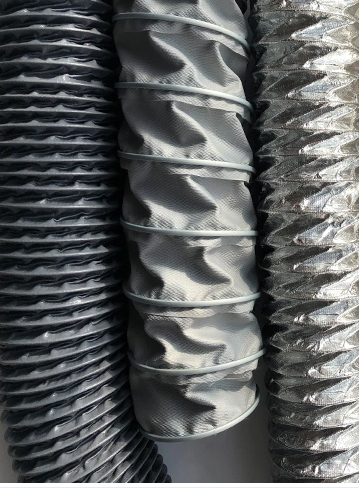Advantages of Using Fiber Reinforced PVC in Construction and Manufacturing Applications
Fiber-Reinforced PVC Enhancing Durability and Versatility in Modern Applications
Fiber-reinforced PVC (polyvinyl chloride) is a composite material that combines the benefits of PVC with the strength and resilience of various fiber additives. This innovative material has garnered attention in multiple industries, including construction, automotive, aerospace, and consumer products. The unique properties of fiber-reinforced PVC make it an ideal choice for applications that demand both durability and versatility.
Understanding Fiber-Reinforced PVC
PVC by itself is a versatile thermoplastic polymer known for its chemical resistance, low cost, and ease of processing. However, it is naturally brittle and lacks the mechanical strength required for some demanding applications. To address these shortcomings, engineers and manufacturers have turned to fiber reinforcement. By integrating fibers such as glass, carbon, or aramid into the PVC matrix, the resultant composite material exhibits enhanced tensile strength, impact resistance, and overall toughness.
Fiber-reinforced PVC can be produced in various forms, including sheets, bars, and complex shapes, depending on the intended use. The selection of fiber type and content plays a crucial role in determining the mechanical properties and performance characteristics of the final product. For instance, glass fibers are commonly used for their high strength-to-weight ratio, while carbon fibers contribute increased stiffness and thermal stability.
Applications of Fiber-Reinforced PVC
The applications of fiber-reinforced PVC are vast and varied. In the construction industry, this composite material is often employed in the manufacturing of window frames, roofing systems, and cladding. Its excellent weather resistance and low maintenance requirements make it ideal for outdoor applications, where exposure to the elements can degrade traditional materials over time. Moreover, its lightweight nature simplifies installation and reduces the overall load on structures.
In the automotive sector, fiber-reinforced PVC is increasingly being used for dashboard components, interior trim, and exterior panels. The material’s resistance to UV radiation and chemicals ensures that it maintains its appearance and structural integrity over extended periods. Additionally, its improved impact resistance contributes to enhanced safety features in vehicles, making it a favorable choice among manufacturers aiming for higher performance standards.
Benefits of Fiber-Reinforced PVC
fiber reinforced pvc

One of the primary benefits of fiber-reinforced PVC is its ability to combine lightness with strength. This characteristic is particularly advantageous in industries where weight reduction is crucial for efficiency, such as aerospace and automotive. Lighter materials contribute to improved fuel efficiency and reduced energy consumption, aligning with contemporary sustainability goals.
Another significant advantage is the customization potential of fiber-reinforced PVC. Manufacturers can adjust the fiber type, orientation, and content, tailoring the material properties to specific needs. This flexibility allows for the creation of high-performance materials suited for niche applications, often leading to innovation in product design and functionality.
Additionally, fiber-reinforced PVC exhibits excellent chemical resistance, making it suitable for environments where exposure to harsh substances is a concern. Its low permeability to moisture helps prevent degradation, ensuring a longer lifespan for products made with this composite material. Furthermore, fiber-reinforced PVC can often be recycled or reused, aligning with global trends toward sustainability and environmental consciousness.
Challenges and Future Developments
Despite its many advantages, the use of fiber-reinforced PVC is not without challenges. The manufacturing processes can be complex and require careful control to achieve the desired properties. Moreover, the cost of high-quality fibers can increase production expenses, potentially limiting the market reach of this composite material.
However, ongoing research and advances in fabrication technologies are paving the way for wider adoption of fiber-reinforced PVC. Innovations in synthetic fibers and resin systems, along with improvements in recycling methodologies, can enhance performance while reducing costs. As industries continue to prioritize sustainability and safety, the demand for high-performance materials like fiber-reinforced PVC is likely to grow.
Conclusion
Fiber-reinforced PVC is a remarkable composite material that combines the best attributes of PVC with the strength of reinforcing fibers. Its growing popularity across various sectors underscores its value in enhancing product durability and versatility. As technology continues to evolve, fiber-reinforced PVC is poised to play a vital role in shaping the future of material science, contributing to more efficient, sustainable, and high-performance products across the globe.
-
Welded Wire Mesh Panel: Durable, Versatile, and AffordableNewsJul.28,2025
-
Top Quality Oxy Acetylene Hoses for Sale Fit for Welding DemandsNewsJul.28,2025
-
The Future of Pneumatic Air Tubes in IndustryNewsJul.28,2025
-
Superior and Reliable LPG Hose Pipe Solutions for Every NeedNewsJul.28,2025
-
Exceptionally Durable and Versatile Premium Braided PVC TubingNewsJul.28,2025
-
Best Adapters for Connecting Garden Hose to PVC Pipe ConnectionsNewsJul.28,2025














